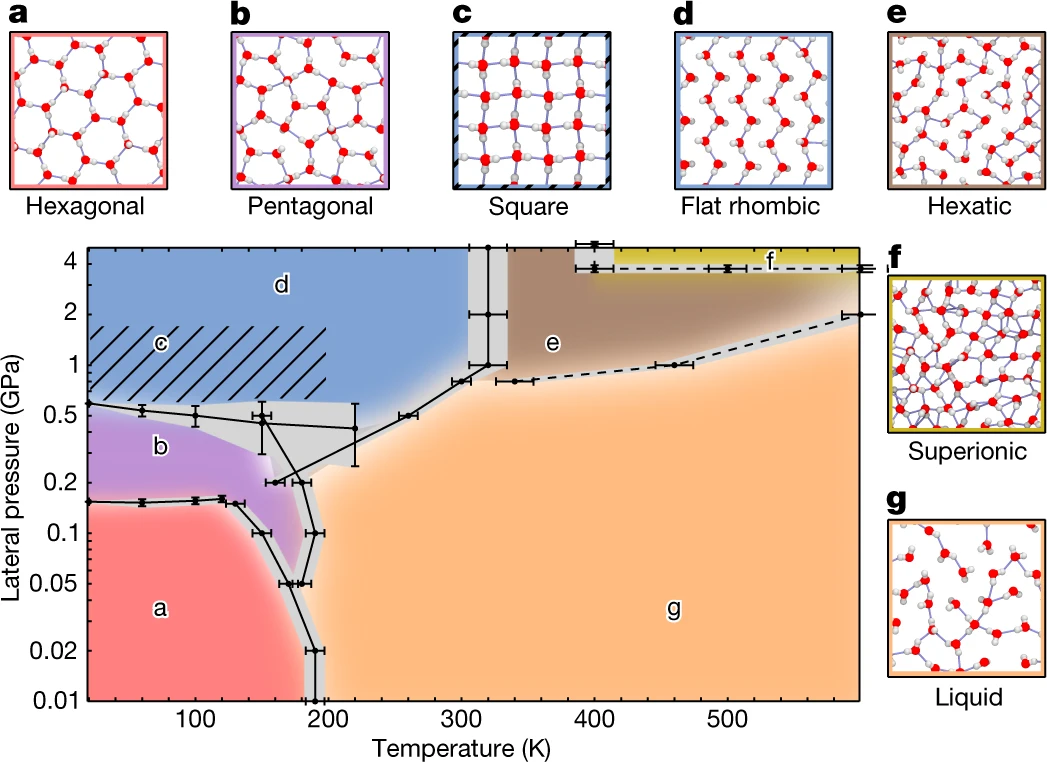Water

As a follow on to my post about glass, it’s worth noting that a recent Nature paper has reported improved understanding of nano-scale water — specifically water trapped in a one-molecule thick layer, as might occur between membranes.
For anyone who read my post on glass, it will be no surprise to see sentences such as “the water acts as neither a solid nor a liquid, but something in between” in a press release about this work.
As with glass, part of the emphasis is on the idea that some materials defy classification into common categories like solid and liquid, even though we are often trained to think of those as fundamental. I think the more interesting part, however, is how this example blurs several categories at once.
First, there is the question of dimensionality. Clearly all types of water are three-dimensional in some sense (or four-dimensional or ten-dimensional, depending on which conceptualization / theory you want to utilize), and yet here is a case where the authors can usefully describe this as a “two-dimensional material” (in that the substance, more or less by definition, is constrained to a two-dimensional manifold, which nevertheless will twist and turn in three-dimensional space).
Even more interesting, work on nano-materials inevitably raises questions about the nature of “materials” in general. If we’re working with a single molecule of H2O, that feels like a fairly well-defined object (even though such a thing might rarely if ever exist in isolation without the intervention of intelligent life, and even though the molecule is of course made up of atoms, which are themselves made up of quarks, etc, etc.). Once we get a sufficiently large collection of molecules, it makes sense to speak in terms of “water”, in liquid, solid, or gaseous form. At point in between, however, it becomes less clear.
At one point does a collection of H2O molecules become water? Two? Three? Is a two-dimensional manifold of H2O atoms correctly called water, or is it just a special system of molecules? Does it matter if such a material is likely an idealization (possibly modeled using infinite boundaries, etc.), which might almost never exist in such a pure two-dimensional state, except perhaps in experimental conditions?
Finally, although I can’t claim to fully understand it, it’s worth noting that this research is based on computational models (specifically Quantum Monte Carlo methods paired with a Machine Learning Potential approach), not empirical work. This seems to be a case where better models (with a more sophisticated inference engine) are able to come up with an explanation that resolves paradoxes or seeming inconsistencies in previous empirical work. Still, it doesn’t hurt to throw in the conceptual blurring of what exactly counts as knowledge, as opposed to just data. We know something of water, but what precisely do we truly know?